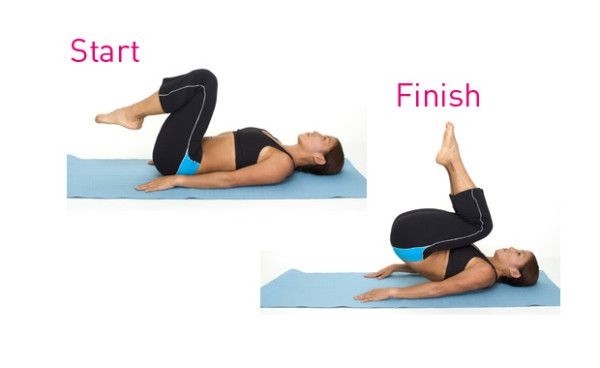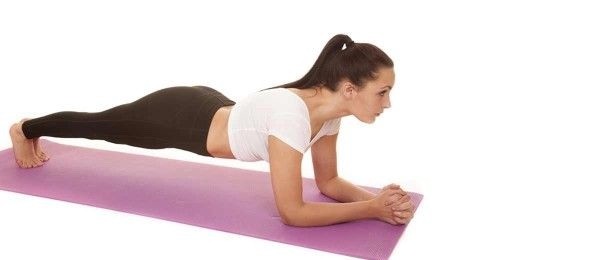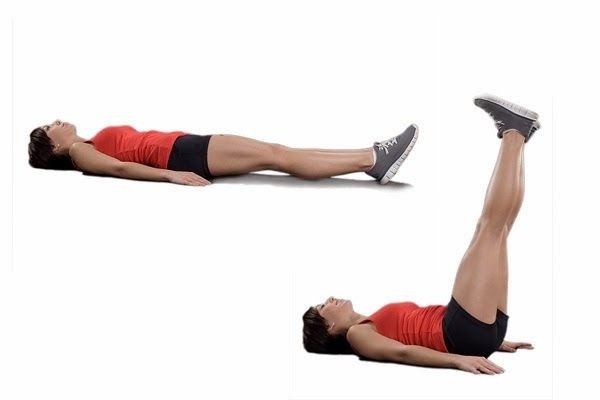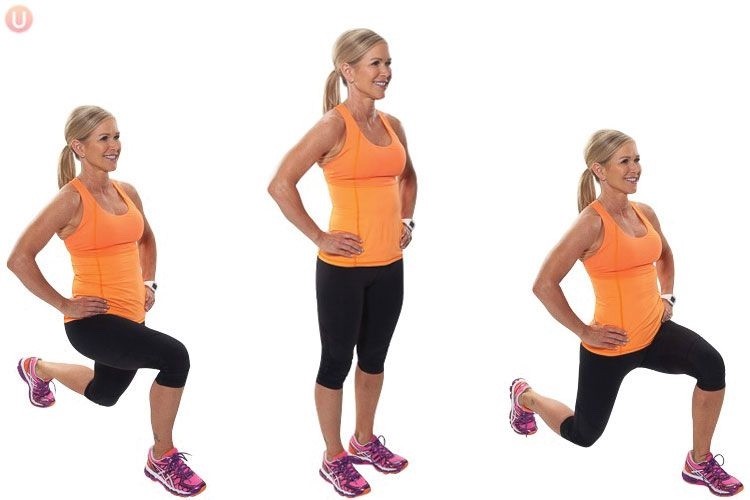
investigate these:
https://www.verywellfit.com/compound-exercises-for-the-entire-body-1231029
https://www.theatlantic.com/health/archive/2022/05/sit-ups-crunches-lower-back-pain/639437/
If you’ve ever been told to lift with your legs, this is why. When a person’s spine curves and strains in order to move weight through space—like when a bunch of third graders flail through a set of sit-ups—the movement stresses their spinal disks. The more often you ask your spine to flex in those circumstances, the riskier it is. This is how people who spend their working lives moving inventory around a warehouse or stacking bushels of produce onto trucks end up with back pain later in life, even if they can’t point to any acute back injuries suffered along the way.
McGill found that the most reliable way to avoid this kind of chronic problem is to brace your core when you pick up something heavy. That means tensing key muscles in order to protect your spine’s structural integrity, and to help shift the effort to your hips and legs. Not coincidentally, weight lifters follow this advice when they safely execute a dead lift. Perfect form is not always possible for workers dealing with irregular loads and crowded spaces, but intentional exercise is all about form. Getting it right and activating the intended muscles is the whole point.
The sit-up and crunch violate all of these principles. The exercise asks you to pick up something heavy, but because you’re lying on the ground and the heavy thing is your upper body, there’s no way for you to brace your core and shift the effort to the big, high-capacity muscles of your legs. And the exercise is, by its nature, repetitive.
The Presidential Youth Fitness Program, which replaced the Presidential Fitness Test almost a decade ago, now recommends that children practice curl-ups, which are a much more subtle movement developed by McGill that asks exercisers to brace their core while lifting their head and shoulders only slightly. (If your fitness routine regularly includes planks, bird dogs, or dead bugs, that’s also McGill’s doing—he didn’t develop those exercises, but he did usher them into mainstream use as sit-up alternatives.)
https://www.verywellfit.com/how-to-do-the-bird-dog-exercise-3498253
Find a spot with enough space to extend an arm and leg at the same time. Kneel on an exercise mat or other cushioned surface with your knees hip-width apart and hands firmly on the ground, about shoulder-width apart. Brace your abdominals.
https://www.verywellfit.com/how-to-do-the-dead-bug-exercise-4685852
The dead bug exercise is performed on the ground, so you need roughly the same amount of space as a yoga mat. And, you probably want to use a yoga mat or another type of exercise mat for comfort.
from: http://myhealthy.tips/best-

This exercise strengthens and targets the lower abs, legs and hip flexor muscles. First, lay on you back and lay your arms flat beside you. Bend your knees keeping your feet together. Engage your abs and lift your hips off of the floor bringing your knees into your chest, hold and lower back to the starting position on the floor. That is one repetition. Don’t swing your legs. Use your core muscles to slowly control all the “reverse crunch” movements. Remember to breath.

This effective core exercise strengthens your lower back, hips, shoulders and core muscles. It also lengthens the muscles. Lay flat on the floor with your arms straight in front of you. At the same time position your legs so they extend straight behind you. Now lift both arms and legs at the same time. The Superman uses your bodyweight and isolates the core as you lift your arms and legs simultaneously off the floor, to look like like Superman flying. Hold for 15 seconds, release and hold again for 15 seconds. Remember to breathe.

Squats are a full body workout that engages the quads, glutes, lower back and hamstrings in one challenging move. Stand straight with your legs shoulder width apart. Your toes should face outward and your arms in front of you parallel to the floor. Slowly bend your knees and sit back similar to when you sit into a chair. Concentrate on putting your weight on your heels instead of the toes. Look straight ahead and raise back up to a standing position. Beginners can hold onto a chair or bar to help them balance. Work up to 3 sets of 15 repetitions. Remember to breathe.

This exercise engages the entire body and is very challenging for those at any fitness level. The plank engages your abs, strengthens the lower back and your shoulders. First, lie face down with your palms on the floor. Next lift your entire body so your body weight is resting on your elbows and your legs are straight and inline with your shoulders. Hold this position as long as you can, release and return to the plank again. Try to hold each plank for two minutes. As you get stronger, hold the plank longer each time. Remember to breathe.

Sit-ups are an amazing way to build and strengthen your abdominal muscles. The problem is, most people do not perform this exercise correctly. When done correctly, they are one of the most challenging body-weight exercises. Start by lying on your back with your legs bent up, then either cross your arms over your chest or place your hands behind your head. Once you are in the starting position, use your abdominal muscles to pull your body up towards your knees and then go back down. Perform 3 sets of 15-20 reps. If you can’t perform a standard sit-up correctly, try doing a crunch variation instead.

A push up is a classic muscle building move that is great for strengthening arm muscles, chest and shoulders. Lie face down with your palms on the floor and push your body up and down using your arms. Make sure your hands are in line with your shoulders and your fingers are facing forward. Your arms should be straight but not locked. Beginners can start on your hands and knees and push your body up and down using your arms. Hold in your stomach by engaging your abdominal muscles. Remember to breathe.

The lying hip raise will help to strengthen your hamstrings and glutes, while also working your abdominal muscles, back, and inner thighs. To perform this exercise, start by lying on your back with your knees bent up and place your arms flat on the floor beside you. Then, lift your butt and back off of the floor while keeping your feet and upper back still placed against the floor. Hold the position for a second and then lower your body back down. Perform 3 sets of 8-12 reps of this exercise.

Double leg lifts target your lower abs but benefit the entire abdominal area and the back also. This exercise has also been known to make you less prone to injury as well. Start by lying flat on your back and keep your feet close together. Pull your legs up to where they are straight in the air and then lower them to where your legs are as close to the floor as possible without allowing them to touch. Next, pull your legs back up to the starting position. Be sure to keep your lower back pressed into the floor the entire time you are performing this exercise. You can place your hands on the floor or underneath you, placing them underneath you will make the exercise a little easier. If you can’t perform the exercise correctly, try bending your knees while doing it. Performing 3 sets of 10-15 reps should be sufficient. Although, some people like to perform 3 sets of 30 seconds for this exercise.

Lunges work your hips, glutes, and several other different muscles in your legs. Start the exercise with your feet close together and your arms at your sides. Step forward with one foot and lower your body until your front knee is parallel with the floor. While doing this, do not allow your back knee to touch the floor. Then push off your front foot while straightening the opposite leg. You should now be back to the original starting position. Now, do the same movement starting with the opposite leg this time. Perform 8-12 reps each leg or more for advanced weightlifters.